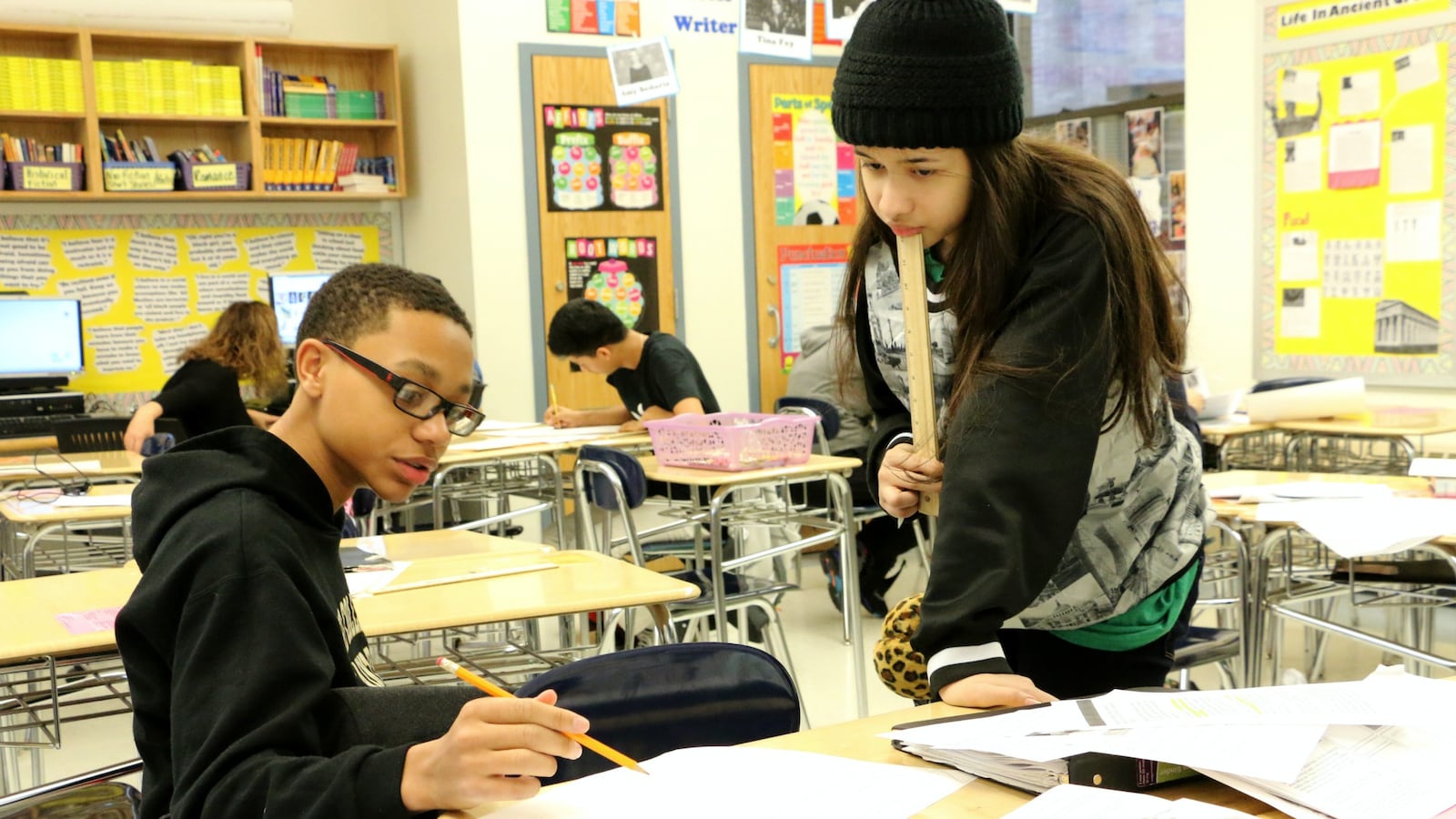Programs aimed at cultivating high school students interested in making teaching a career are undergoing a significant expansion in New York City, in the city’s latest effort to diversify its teaching force.
The city is set to go from five teaching-themed high schools two years ago to 25 schools with courses or clubs meant to set students on a path to heading their own classrooms. And Chancellor Richard Carranza is making a personal pledge to students who participate: Fulfill their goal of becoming teachers, and he’ll assure them a job.
Carranza recently told a group of student reporters that he intends to give employment “contracts” to students at teaching-oriented high schools.
The contract, he said, “will basically say, you’re hired as a teacher in NYC. … Once you get your degree, you’re guaranteed a job.”
Carranza’s pledge — and its potential impact — is largely symbolic: The city cannot guarantee future employment, and even with a growing number of schools seeking to get students invested in the idea of becoming teachers, high school programs won’t produce enough graduates to tilt the demographics of the city’s teaching force.
Still, the pledge adds to the city’s growing roster of initiatives aimed at diversifying its teaching corps. While more than 80 percent of city students are black, Latino, or Asian, less than 40 percent of their teachers are, according to recent state data.
The gap is significant: Research has found that students who have teachers who resemble them have on average higher test scores and elevated expectations of what they can accomplish.
Carranza’s predecessor, Carmen Fariña, also praised high-school teacher programs for showing students that teaching can be an attractive career choice.
Now, education department spokesperson Doug Cohen said, “We’re investing in strategies to help more New York City public school students become New York City public school teachers” — in hopes those future educators will look more like the students they teach.
It’s unclear how big of a dent the new programs could have in the makeup of the city’s teaching force. Already, nearly one third of the district’s new hires are graduates of the city’s public schools.
But the efforts contribute to a shift already underway in the city’s approach to hiring. The NYC Men Teach initiative has “surpassed its goal of placing 1,000 men of color in the pipeline” to teach in city schools, according to Cohen, and the education department is now working with Educators Rising, a group affiliated with a national teachers association, to develop more teachers of color locally.
The group has started new programs at four high schools — Progress High School, the Brooklyn Institute for Liberal Arts, the High School for Medical Professions, and John Dewey High School — where some students are already participating in weekly programming, led by a school-based staff member, usually a teacher. The programs include an assortment of future-teacher clubs, classes or guidance into the profession.
These schools join five others — one in each borough — that already had a teaching theme: Bronx High School for Teaching and Professions, Queens High School of Teachers, Manhattan’s Richard R. Green High School, Teachers Preparatory High School in Brooklyn and New Dorp High School in Staten Island.
Joan Weaver, the principal at Richard R. Green said that, like the rest of the city on average, more than 80 percent of the school’s students are Hispanic, black, or Asian. This diversity makes the school fertile ground for growing “the next generation of teachers,” she said.
Students enter the teaching academy junior year and participate in an internship within the school. They are paired with a real teacher whom they assist in the classroom. Senior year, students have “externships” at neighboring schools, where they can begin to figure out what kinds of jobs they might want someday. “They get a chance to say, ‘Oh, wait, I prefer this grade or to teach this,'” Weaver said. “They all think they want to teach little kids” but after working in an elementary school, many discover they enjoy teaching older students more.
And by helping these would-be teachers develop culturally relevant education practices, a centerpiece of Carranza’s vision for the city’s schools, such programs can help participants build the skills they’ll need in their future classrooms.
Starting this year, some students can begin to earn college and Regents credits that will ease the path into the teaching profession, according to an education department official. And the assortment of Educators Rising clubs or programs represent a way to replicate in existing high schools some of what Carranza says he admires at the teaching-themed schools.
“Those classes are diverse,” Carranza told YCTeen, so the students becoming teachers will be, too. “I want to nurture them so they come back.”

